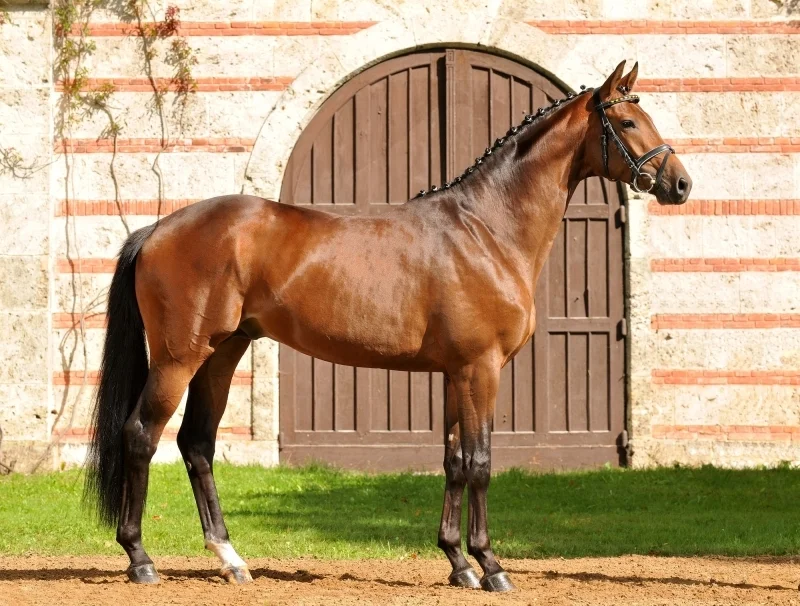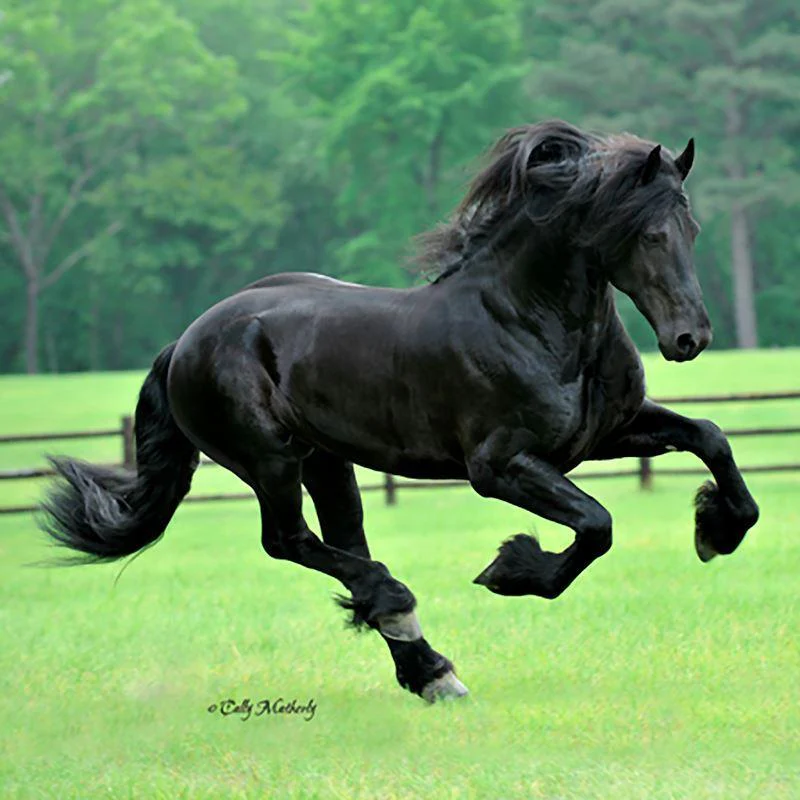Horses with exceptional bloodlines or remarkable career potential often fetch extraordinary prices in both auctions and private sales. Whether it’s a Thoroughbred excelling on the racetrack or a top-tier showjumper, their value is closely tied to their heritage, training, and proven or potential success. For example, legendary war horses have made history with their strength and courage, as seen in 10 Legendary War Horses That Made History. Similarly, top horse breeds known for their speed, strength, and beauty remain highly prized, as detailed in 10 Top Legendary Horse Breeds.
For those interested in showcasing their horses, the competitive world of horse shows offers a chance to highlight talent and training. Understanding what judges look for and how to prepare can make all the difference in success. To learn more, explore Horse Shows and Competitions: What You Need to Know.
Why Are Horses So Valuable?
Several essential factors contribute to why some horses command such high prices:
Pedigree:
Horses that hail from illustrious bloodlines like Northern Dancer or Secretariat are especially valuable. These lineages are known for producing championship-level offspring, attracting interest from breeders and buyers.
Future Success:
Horses with an established track record in racing or other equestrian competitions, or those with strong genetic potential, are seen as solid investments. Buyers often pay top dollar expecting these horses to generate profits through race winnings and breeding.
Scarcity:
Certain breeds, like the Akhal-Teke and Marwari, are rare, which boosts their desirability and price. Their unique qualities, combined with their limited availability, make them even more valuable.
Training and Achievements:
Horses that have undergone high-level training and demonstrated their capabilities in elite competitions tend to be more expensive. Their potential for ongoing success in equestrian sports enhances their appeal.
The World’s Most Expensive Horse Breeds
Some horse breeds have earned their place among the most valuable due to their versatility, performance, and lineage. Here’s a closer look at the top horse breeds and what makes them so valuable:
1. American Thoroughbred ($50,000 – $300,000+)

Overview:
The American Thoroughbred is widely regarded as one of the fastest and most versatile horse breeds in the world. Renowned for their speed, stamina, and agility, Thoroughbreds dominate in racing, but their abilities extend far beyond the racetrack. They are also highly valued for dressage, show jumping, and eventing due to their natural athleticism and competitive spirit.
Bloodline Influence:
Thoroughbreds often come from prestigious lineages, with many descended from legendary sires like Northern Dancer and Secretariat. Horses like Fusaichi Pegasus, who sold for $70 million, have set records due to their impeccable pedigrees.
Physical Traits:
Thoroughbreds have a slim, muscular build, standing between 15 to 17 hands high. They are known for their long necks, deep chests, and strong legs, built for speed and endurance.
Uses:
Primarily used for racing, Thoroughbreds also excel in eventing and dressage, making them one of the most versatile breeds in the equestrian world.
2. Trakehner ($50,000 – $300,000)

Overview:
The Trakehner breed originated in East Prussia and is known for its elegance and strength. These horses were initially bred for military use, but they have since evolved into some of the most versatile horses in the equestrian world. They are particularly famous in the world of dressage and show jumping for their agility, intelligence, and trainability.
Bloodline and Breeding:
Trakehners are one of the oldest warmblood breeds and are known for their strict breeding standards, ensuring that only the best qualities, such as intelligence, trainability, and athleticism, are passed down.
Physical Traits:
Trakehners are known for their light build, with an average height of 16 to 17 hands. They are muscular yet refined, with long necks and powerful hindquarters that give them the grace and power to excel in many disciplines.
Uses:
Trakehners are commonly seen in dressage, eventing, and show jumping due to their agility and balance. Their willing temperament and adaptability make them a favorite among competitive riders.
3. Friesian ($50,000 – $100,000)

Overview:
The Friesian horse is one of the most visually stunning breeds, instantly recognizable by their glossy black coats and luxurious manes and tails. Originating from the Friesland region of the Netherlands, Friesians were originally bred as war horses but are now admired for their beauty and versatility. They are primarily used in dressage and carriage driving today.
Heritage and Rarity:
Friesians have been bred for centuries, making them one of the oldest horse breeds still in existence. They were almost driven to extinction during wartime, which adds to their rarity and high value in today’s market.
Physical Traits:
Friesians are typically 15 to 17 hands high and are known for their strong, muscular build. Their arched necks and high-stepping gaits make them particularly elegant in movement, especially in dressage competitions.
Uses:
Friesians excel in dressage, thanks to their natural grace and fluid movements. They are also popular in carriage driving and are sometimes used in pleasure riding because of their calm temperament.
Learn More About Top Black Horse Breeds
4. Oldenburg ($40,000 – $100,000)

Overview:
The Oldenburg horse, originally bred in Germany, has transitioned from a carriage horse into one of the most sought-after breeds in dressage and show jumping. Known for their strength, power, and calm demeanor, Oldenburgs are highly prized in competitive equestrian sports. The breed is known for being highly trainable, which is a desirable trait for riders looking to compete at high levels.
Bloodline and Selective Breeding:
Oldenburgs are a warmblood breed and are known for their exceptional breeding practices. Only the best sires and mares are used to ensure that the Oldenburg’s power, grace, and performance ability are passed down through the generations.
Physical Traits:
Oldenburgs are tall horses, usually standing between 16 to 17 hands. They are known for their muscular build, with powerful hindquarters and a long, elegant neck. Their natural athleticism and balance make them a favorite in show jumping and dressage competitions.
Uses:
Oldenburgs are used primarily in dressage and show jumping, where their strength, agility, and willingness to work make them standout competitors. They are also known for their calm temperament, which makes them easier to train and handle.
5. Akhal-Teke ($10,000 – $25,000)

Overview:
The Akhal-Teke, often referred to as the “golden horse,” is famous for its metallic sheen and incredible endurance. Originating from Turkmenistan, this breed is one of the oldest and rarest horse breeds in the world, with fewer than 7,000 remaining today. The Akhal-Teke’s unique appearance and ability to endure long distances have made it a symbol of prestige.
Rarity and Exotic Appeal:
Due to their scarcity and exotic looks, Akhal-Tekes are highly valued in the equestrian world. Their metallic coat, which can appear in shades of gold, black, and chestnut, gives them an otherworldly beauty. The Akhal-Teke’s ability to survive in harsh desert conditions has been passed down through generations, adding to their endurance and strength.
Physical Traits:
Akhal-Tekes typically stand around 15 to 16 hands. They have a slender build, with long legs and a narrow body. Their coat’s metallic sheen and their distinctive high-set tail are some of the breed’s most remarkable features.
Uses:
The Akhal-Teke is known for its endurance, making it ideal for long-distance riding and endurance events. They are also used in showjumping and dressage, where their speed and agility are showcased.
Learn More About Top White Horse Breeds
6. Dutch Warmblood ($10,000 – $75,000)

Overview:
The Dutch Warmblood is one of the most versatile and popular horse breeds in the world, excelling in dressage, show jumping, and eventing. Bred in the Netherlands, Dutch Warmbloods are highly regarded for their athleticism, intelligence, and trainability. They are one of the most successful breeds in equestrian sports, regularly competing at the highest levels.
Selective Breeding and Success:
Dutch Warmbloods are the result of selective breeding that combines traits from Groningen and Gelderland horses, ensuring the breed’s strength, agility, and intelligence. The breed has consistently produced winners in international competitions, which has increased its value.
Physical Traits:
Dutch Warmbloods stand between 15 to 17 hands and have a well-balanced, muscular build. They are known for their smooth gaits, strong legs, and powerful hindquarters—essential traits for success in dressage and showjumping.
Uses:
Renowned for their adaptability, Dutch Warmbloods shine in dressage, show jumping, and eventing. Their power, coordination, and willingness to learn make them one of the top-performing breeds in competitive equestrian sports.
Significant Horse Sales in History
A few high-profile sales have left a lasting impression in the world of equestrian sports, showcasing just how valuable these horses can become:
- Caldwell Potter: In 2024, Caldwell Potter became the highest-priced National Hunt horse when he sold for €740,000 at a public auction, setting a new standard in this discipline.
- MHS Going Global: This record-breaking showjumper was sold for €12 million in 2016, reflecting his excellent international performance and value in the equestrian world.
FAQs
Why are Thoroughbreds so valuable?
- Thoroughbreds are bred for speed and racing potential, which makes them highly sought after. Their ability to generate income through racing wins and breeding significantly contributes to their high price.
What factors influence the price of a horse?
- The primary factors include bloodline, career potential, rarity, and training. Horses from prestigious lineages like Northern Dancer or Secretariat and those with competition success command higher prices.
Are all expensive horses used for racing?
- No, while Thoroughbreds are primarily bred for racing, other breeds like Friesians, Oldenburgs, and Trakehners excel in dressage, show jumping, and carriage driving.
What is the rarest horse breed?
The Akhal-Teke, known for its metallic coat and remarkable endurance, is one of the rarest horse breeds globally. Its scarcity significantly increases its market value.

